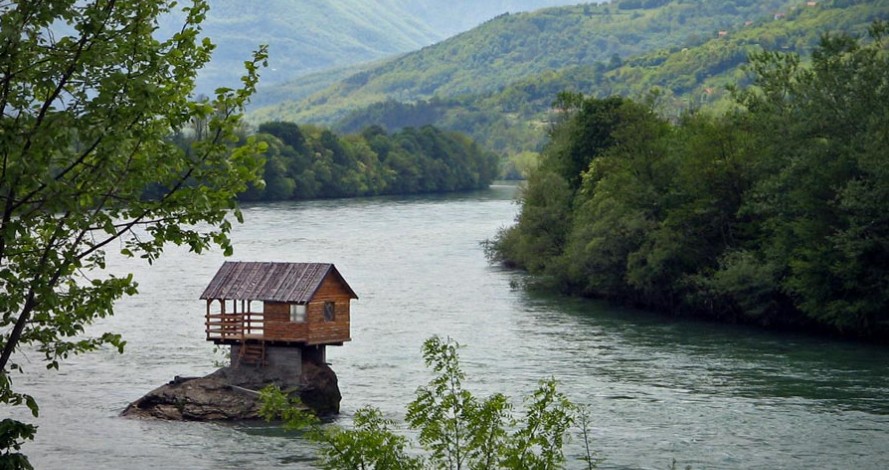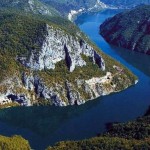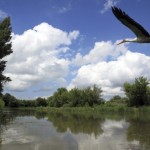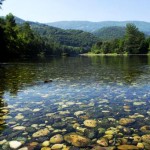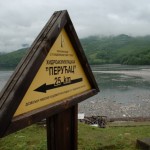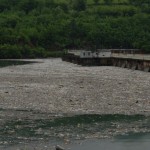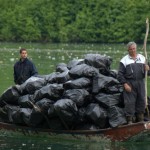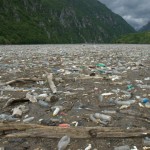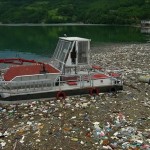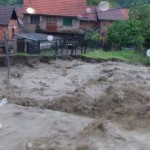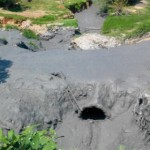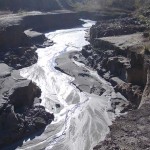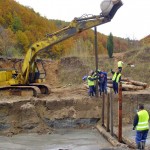BELGRADE, Serbia — The Drina River runs from south to north after its birth in Montenegro, created from two beauties: the Tara and Piva rivers. Locals tend to call her the River of Life, while the Old Slavic name is Zelenika (Green One). To be honest, she is still green and pure for the most of her flow. Water pours in from many mountains and the Drina is one of the cleanest rivers in Europe. The Drina joins the Sava River at the end of her 346 kilometers long flow. Along with the waters of the Danube, these rivers will reach the Black Sea in the end.
Drina is also a border line between Republika Srpska (BiH) and Serbia for some 220 km. Somewhere at around half of that distance Perućac Dam shelters a power plant, contributing power to Serbian grid. The concrete wall of Perucac has turned out to be a very problematic spot, as it stops the river’s flow and gathers plastic waste, which has proved to be very hard for cleaning and removal.
Both states tried to solve this problem, but obviously not strongly enough. Plastic bottles, bags and similar garbage are washed down with high waters and all that mess piles up at the dam, creating a very ugly site. One little boat, modified to collect the garbage, tries his best to clean it up but this effort seems pointless when you see all those new garbage piles coming downstream.
This place really gives us true picture of plastic waste problem. Approximately 5000 cubic meters of waste are removed from the river annually, but the problem is not solved since trash dumps of the upper towns are located on the banks while the local population is not educated to care about the effects on surrounding nature.
The municipalities of Rudo, Priboj, Prijepolje, and Bijelo Polje have placed their trash disposal dumps next to the Lim River (a tributary of Drina), and high spring water washes the trash down to the Drina. This problem affects Montenegro, Serbia and BiH.
We are driving down the road next to the Drina River heading north, and after Ljubovija, a nice little place, we can see next a sad example of human indifference. Zajaca mine, which has a history of mining going back to Roman times, has released dangerous toxic waste into the Drina. Heavy rains that occurred in the spring of 2014 caused flooding in this area and tailings sludge from Zajaca Mine was washed down to the Drina.
The mine is privately owned now by Farmakom Company from Sabac. Ash, a by-product of lead and antimony extraction, has very small particles and prevents oxygen from reaching any organism underneith it. This ash contains lead, zinc, etc. Farmakom’s company owner has detained for financial violation and tax fraud.
The sludge pond is under control now. Until the next heavy rain.
But tap water in Zajaca is still prohibited for drinking. Local children are monitored now because many of them have had increased lead percentages in blood testing.
In a nearby place, Stolice, another mine (also owned by Farmakom) released additional amounts of toxic sludge into Korenita River, and it all ended up in the Drina. Many farmers decided not to crop their fields due to the pollution.
Another spring is coming, and no solution is offered yet.
By Miroslav Velimirovic
